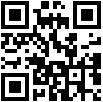
 |
Quick Response Code (QR Code) is a square matrix symbology invented by Denso (then Nippondenso ID Systems) and announced in 1994. QR Code is a two-dimensional symbology containing dark and light square data modules and is in the public domain. |

About Quick Response Code
Learn more about fitQRCode Encoding/Decoding SDK or send e-mail to:service@efittech.com
FitQRCode SDK for J2ME is the first QR SDK release for J2ME environment in the world. It supports the following runtime environments:
- Windows
- Linux with Java Virtual Machine
- Unix with Java Virtual Machine
- Symbian with Java Virtual Machine
- Windows Mobile with J9
- J2ME cellular phone
- Other J2ME/J2SE runtime environment
Maximum symbol size is 177 modules square, capable of encoding 7,089 digits, and 2,953 bytes, QR code can encode a maximum of 1,817 Kanji and Katakana and Chinese characters. One important feature of the symbology is its ability to encode directly Japanese Kana-Kanji character and Chinese GB2312 character sets.
Four levels of error correction are available. A quiet zone of four modules wide is required around the perimeter of the symbol. There are two models of QR Code: Model 1 and Model 2. Model 2 is an enhancement of Model 1 and is recommended for all new applications and those within an open systems environment.
QR Code is designed for rapid reading using CCD array cameras and image processing technology because of the layout of the finder pattern.
A two-dimensional imaging device such as a CCD camera is necessary to scan the symbology. It supports industry standard escape sequences to define international code pages and special encodation schemes. QR Code is used for small item marking applications using a wide variety of printing and marking technologies.